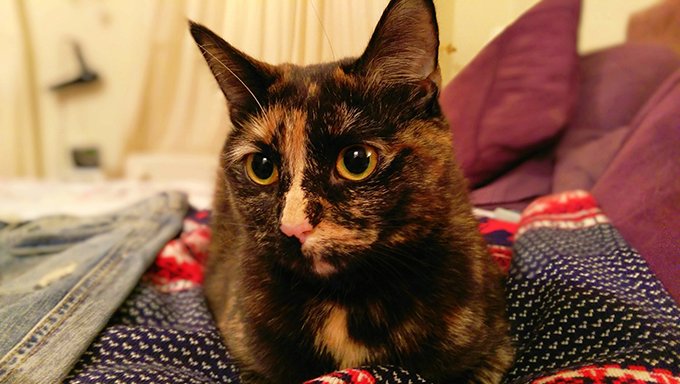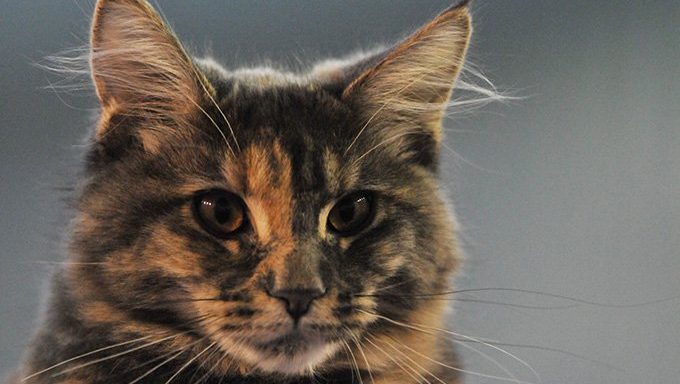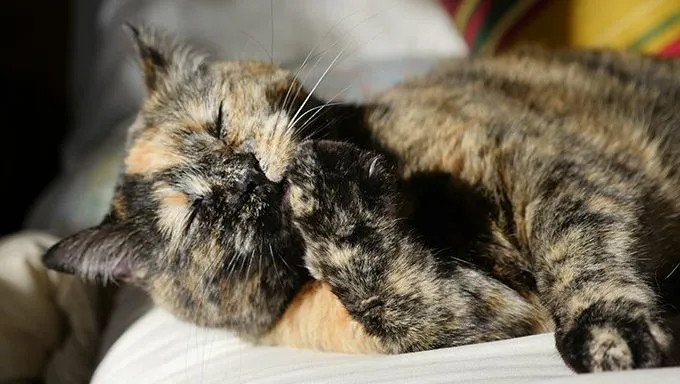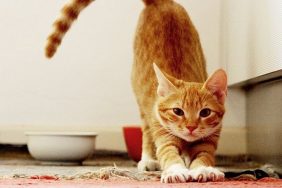We at CatTime love our daily dose of cat facts. If you’ve come looking for facts about totally terrific tortoiseshell cats, you’re in the right place!
Torties are sweet, lovable felines with a feisty side that’s sure to keep you on your toes.
Here are a few facts you may not know about tortoiseshell cats.
What Does ‘Tortoiseshell’ Mean?
Tortoiseshell cats are so named for their distinctive, two-toned coats. Their coats resemble tortoiseshell, an ornate material produced from — you guessed it — the shells of tortoises.
Tortoiseshell cats, or “torties” as they’re affectionately known, have coats that combine two colors other than white that are usually in large patches or closely mixed. Most torties have ginger and black coats that may vary in shades and patterns.
Tortoiseshell cats are by no means their own breed, but there are some unique attributes that make a tortie a tortie.
Torties Are Almost Always Female

You will rarely find a male tortoiseshell kitty. Much like calico cats, tortie cats get their distinctive coloring from the “O” gene carried on the X chromosome.
The “O” gene is in charge of the ginger color of cats. Since male cats have XY genetic makeup, they only need to inherent one “O” gene to be ginger cats.
Female cats have an XX genetic makeup, so they would need to inherent two “O” genes to be ginger cats. If a girl cat only inherits one “O” gene, she becomes a tortoiseshell cat.
In rare instances, males will develop with an XXY genetic makeup. In these instances, they could be tortoiseshell or calico cats. Male torties, however, are almost always sterile due to their genes.
Tortoiseshell Kitties Appear In Folklore

Cats are part of many cultures’ folklores, and tortoiseshell cats have a few standout appearances.
For example, in Southeast Asia, it was once told that the blood of a young goddess created the first tortie.
In England, a tortoiseshell cat’s tail was believed to help cure one of warts if they rubbed it on the ailment.
In Japan, tortoiseshell cats were once used to ward off ghosts.
Even today, torties still hold a place in superstition. In the United States, torties are known as “money cats” and are believed to bring good luck.
‘Torti-tude’ Is A Real Thing Backed By Science!

Many tortie lovers may notice that tortoiseshell cats and calicoes tend to have a bit of cat-itude. In fact, so many tortoiseshell loving humans have experienced this sass that they’ve even given it its own name: torti-tude.
Torti-tude is not just in the imaginations of tortie parents. Veterinarians from the University of California, Davis, have studied and published research stating that cats with calico and tortoiseshell coat patterns tend to challenge their humans more often than cats with other coat patterns.
Tortoiseshell cats are also anecdotally highly energetic kitties. Most tortie cat parents will tell you that their cats have bursts of spastic and wild energy, even if it’s just for a short span of time. And it will almost always be at the most inconvenient moments.
Tortie lovers know that their cats may have a bit of a ‘tude and demanding nature, but we can’t help but love them anyway.
Do you have a tortoiseshell cat? Do you know any more interesting tortie facts that we missed? Let us know in the comments below!









